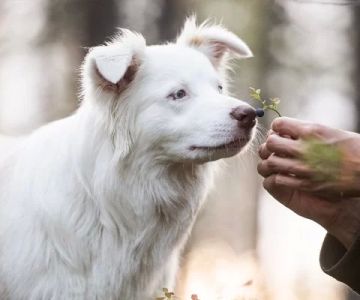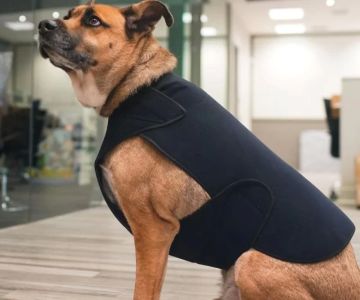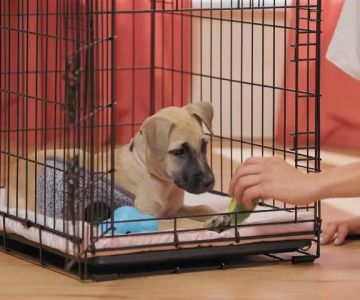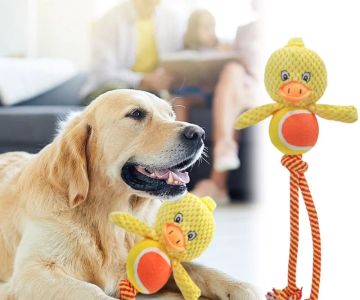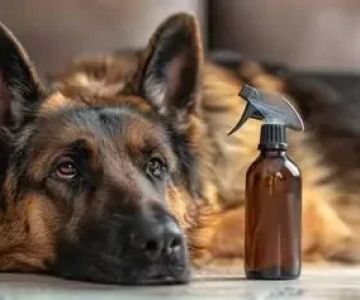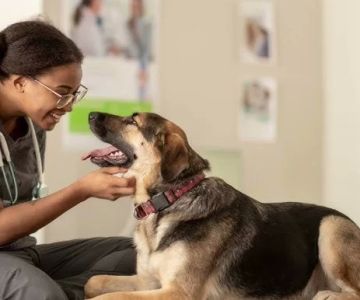How to Help a Dog with Anxiety in Busy Environments
Many dogs experience anxiety in busy, noisy environments. Whether it's the hustle and bustle of city streets, crowded parks, or busy family gatherings, some dogs struggle with overwhelming stimuli. It's not uncommon for dogs to exhibit stress or anxiety when they are exposed to unfamiliar sounds, people, or situations. As a pet owner, it's essential to understand how to support your dog and help them cope with these anxiety triggers.
Understanding Dog Anxiety in Busy Environments
Dog anxiety is a real issue, and it's important to recognize the signs early so that you can intervene before the stress escalates. Some common symptoms of anxiety in dogs include:
- Excessive barking or whining
- Destructive behavior (chewing furniture, digging, etc.)
- Panting or drooling excessively
- Refusal to walk or leave the house
- Shaking or trembling
- Escaping or trying to run away
Anxiety can be caused by a variety of factors, but in busy environments, the overwhelming noise, movement, and unfamiliar people or animals can trigger your dog's stress. This is especially common in rescue dogs or those with a history of trauma. For others, a lack of socialization or exposure to new experiences can also lead to anxiety in crowded settings.
1. Create a Safe Space at Home
Before taking your dog out into busy environments, it’s essential to ensure that they have a calm, secure space to retreat to when the noise becomes too much. This can be a crate, a designated room, or any area where your dog feels safe and can relax. Having a quiet space where your dog can retreat to when feeling overwhelmed can help reduce stress levels.
Place familiar bedding, their favorite toys, or comforting items like a piece of your clothing in the safe space. These elements will offer a sense of security and calm. You can also use calming pheromone sprays or diffusers to help create a peaceful environment.
2. Gradual Exposure to Busy Environments
For dogs that are not used to busy places, sudden exposure can be overwhelming. The key to helping a dog with anxiety is gradual exposure. Start by taking your dog to quieter locations and slowly increasing the level of stimulation.
For instance, if you're preparing to take your dog to a crowded park, begin by walking near the park when it's relatively calm. Gradually, you can increase the intensity by visiting when there are a few more people and eventually building up to busier times. This gradual desensitization helps your dog adjust to the noise and chaos of busy environments at their own pace.
3. Use Calming Products for Dogs
There are a variety of products designed to help calm anxious dogs in stressful environments. These products can be especially helpful when you're planning to visit busy locations. Some options include:
- Calming Collars: These collars are infused with pheromones that mimic the calming scents that mother dogs naturally release. This can help reduce anxiety in your dog when exposed to stressful situations.
- Calming Treats and Supplements: Many calming treats contain natural ingredients like valerian root, chamomile, and L-theanine, which can help soothe anxious dogs. Consult your vet before giving your dog any supplements.
- Thundershirts: This pressure garment applies gentle, constant pressure to your dog's body, which can help reduce anxiety in stressful situations. It's especially effective for dogs with fear-based anxiety.
These products can provide temporary relief, but they should be used alongside training and behavioral techniques to address the root cause of your dog’s anxiety.
4. Positive Reinforcement Training
Training plays a crucial role in helping your dog overcome anxiety. Positive reinforcement is one of the most effective ways to encourage your dog to remain calm in stressful situations. Here are some tips:
- Reward Calm Behavior: Whenever your dog exhibits calm behavior in a busy environment, reward them with treats, praise, or their favorite toy. This will help your dog associate the busy environment with positive experiences.
- Focus on Command Training: Training your dog to respond to basic commands like "sit," "stay," or "focus" can help distract them and redirect their attention when they start to get anxious in busy places.
- Desensitization and Counter-Conditioning: If your dog is fearful of certain stimuli (e.g., loud noises or crowds), gradually expose them to those triggers while providing rewards for calm behavior. Over time, this can help change their emotional response to these triggers.
5. Provide Regular Exercise and Mental Stimulation
Physical and mental exercise are vital for your dog’s overall well-being and can help reduce anxiety. Dogs with pent-up energy are more likely to become stressed or anxious in chaotic environments. Regular walks, playtime, and puzzle toys can help alleviate excess energy and reduce anxiety.
Mental stimulation is just as important as physical exercise. Try introducing new activities that challenge your dog’s brain, such as obedience training, agility exercises, or interactive toys. A well-exercised dog is less likely to become overstimulated in busy environments.
6. Consult a Veterinarian or Behaviorist
If your dog’s anxiety is severe and doesn’t improve with training or behavioral changes, it might be time to seek professional help. A veterinarian can rule out medical conditions that may contribute to your dog’s anxiety and recommend appropriate medications or treatments.
In some cases, consulting with a certified animal behaviorist or dog trainer can also be beneficial. These professionals can help design a personalized behavior modification plan to address your dog’s specific needs and challenges.
At Hidden Brook Veterinary, we understand the challenges that come with managing a dog's anxiety in busy environments. Our team of professionals is here to offer guidance and support to help your dog feel safe and secure. If you're struggling with your dog's anxiety, don't hesitate to reach out for help.




